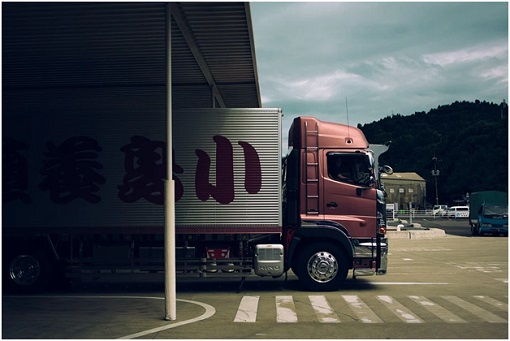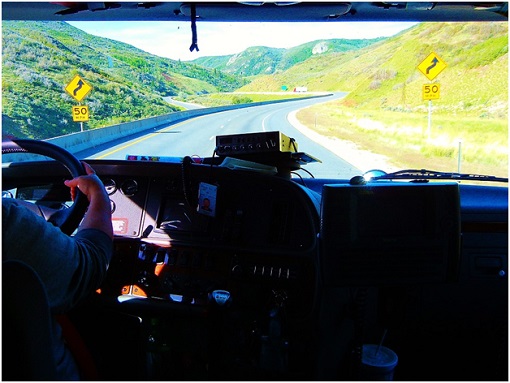Technology is taking over the world. In a bid to create ultimate efficiency, cutting-edge technology is being deployed to design supercomputers that will take over the work done by humans in the near future. According to experts, AI, machine learning, deep learning, and big data are just some of the newest technologies paving the way for a trucking industry that will be ultimately run by robots.
In the USA, 70% of the freight is moved by trucks. The industry employs millions directly and indirectly. Autonomous vehicles are being touted to replace these jobs in the coming years. However, while new technology continues to greatly alter the trucking landscape, the opinion is that automation has a long way to go before fully taking over. It may be many years before the work of industry players such as drivers and customer service personnel gets taken over by smart machines.
Automation in the trucking industry has its benefits and a fair share of challenges. A lot is involved in the trucking industry, but perhaps the most prominent players are drivers. Below are the reasons why we feel that the jobs of truck drivers and other trucking industry personnel will not be destroyed by 2025.
Autonomous Trucks are Good, But Not Good Enough
The latest AI inventions are being employed to make smart trucks that would cut all driver jobs. Modern vehicles are fitted with smart driver assistance technologies that help drivers in traffic, giving them a better experience on the roads. These include adaptive cruise control, drowsiness detection, lane departure detection among others.
Autonomous vehicles are expected to navigate all road types and deliver items to their destinations. However, road conditions vary greatly. While some states have smooth and marked highways, others have unmarked roads with potholes and faulty lighting. Some highways have numerous intersections and roundabouts that need careful navigation. Mountainous regions might have tunnels and climbing lanes that require drivers to be alert at all times. Unpredictable road conditions in different places pose a navigation challenge to fully autonomous vehicles.

Safety Concerns and Liability
In the trucking industry, safety concerns are slowing down the pace of adoption of automation, especially autonomous vehicles. Liability questions have been raised in case of accidents. In case of an accident, drivers can retain a truck accident lawyer here to help them get the compensation they deserve. Accidents during testing have also been observed, poking holes in the seemingly smart technology that will take over the trucking industry.
There is More in Trucking Than Just Driving
Besides driving, truck drivers handle other tasks such as checking and reporting any defects or violations, securing cargo in the hold, planning and mapping out a route, and performing preventive maintenance. There is no automated technology for fastening ropes or unloading cargo, for instance.
On-board sensors can detect some internal and external faults and give alerts about the same. However, the system cannot fix some of the challenges encountered by drivers. When drivers have a flat tire, they will have to fix it. When some fastening gets loose, they will need to park and fix it.
Drivers also sometimes perform customer service duties while on the road. These could be taken over by robots, but it might be many years before we witness a full deployment, if at all it will happen.
Connectivity Challenges
Automation in the trucking industry could result in fully autonomous trucks on the roads. Components such as sensors, radar and lidar, and cameras as well as software that monitors these systems need to communicate with each other, and with other vehicles to avoid any accidents. As it stands, every company that is developing autonomous vehicle manufacture and implement their own individual designs. These systems might not connect to other autonomous vehicles, posing a challenge on the roads.
The question or radar systems also come into sharp focus. Autonomous vehicles depend on the radar to navigate on the roads. Hundreds of such trucks on major roads might pose a challenge to how they communicate with each other. Smooth connectivity would be necessary to ensure that systems seamlessly integrate and operate.

Legislation and Standards
Automation in the trucking industry is a new concept that stakeholders have to contend with. Across the world, it is becoming important for governments to formulate guidelines that guide this next-generation technology. In the US, the federal government has no clear guidelines on the testing of autonomous trucks. A report from the American Transportation Research Institute released in January 2020 under the title “Redefining the Role of Government Activities in Automated Trucking” attempted to address the issue of testing autonomous trucks in the US. The report recommended that the federal government needs to formulate policies for the adoption of technology in the trucking industry going forward.
Aside from the recommendations in this report, there are no clear guidelines that guide autonomous truck testing. States have been left to formulate their own policies. As a result of limited legislation, companies are unable to deploy autonomous trucks on interstate highways as they wish. This further limits the complete rollout of autonomous trucks.
There is also no standardization for autonomous vehicle inspection and service. For instance, what would happen when a fully autonomous truck is stopped on a highway for inspection? Lack of standardization on inspection and service means that companies cannot deploy fully autonomous trucks on the roads, at least at the moment.
Weather
Truck drivers operate under almost all weather conditions. Whether it is snowing, raining, or windy, drivers can deftly maneuver tricky conditions to deliver items to their destinations. Sometimes when prevailing weather conditions become too bad, drivers may be forced to pause their journey. A fully autonomous truck would be required to navigate all weather conditions with ease, although this seems like a tall order at the moment.
Limited Training
Trucking industry players need more training to fully understand how automation can positively impact their businesses. Currently, there is limited training regarding automated systems in the industry.
There is no doubt that automation will revolutionize the trucking industry. Some industry players have recognized the importance of utilizing intelligent systems in their businesses to increase efficiency and save costs. However, automation will not ultimately destroy the industry. On the contrary, smart systems might work hand in hand with humans to achieve better results. Going into 2025 and the near future, automation will change how trucking is done, but definitely not destroy the trucking industry.

|
|
November 13th, 2020 by financetwitter
|


|

|

|

|

|

|




























Comments
Add your comment now.
Leave a Reply